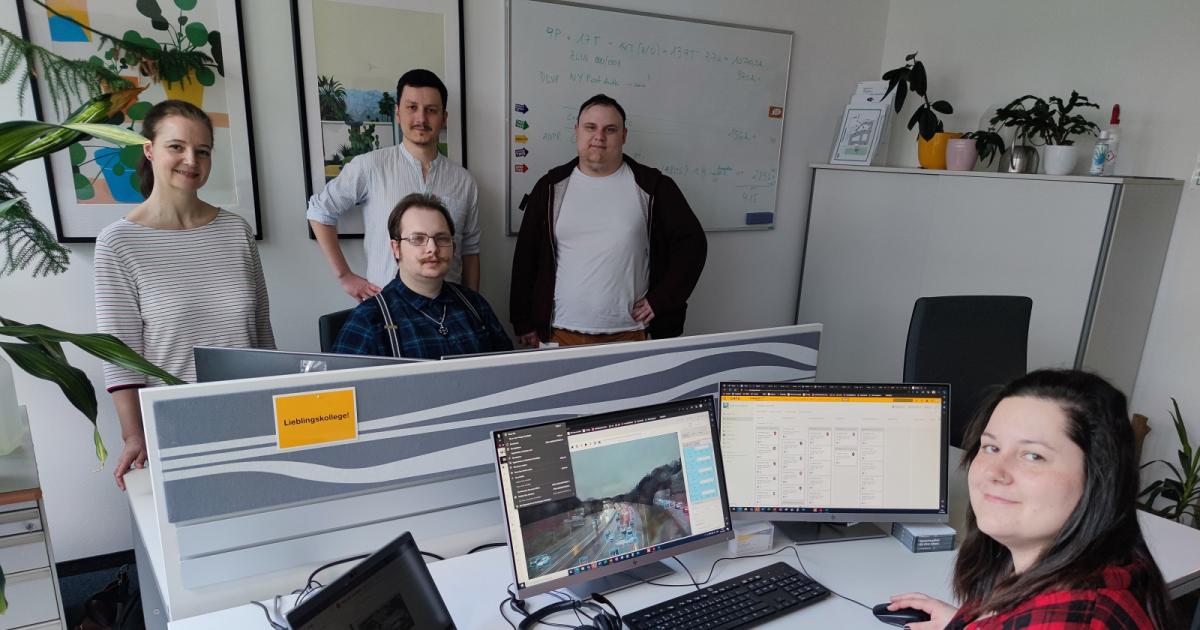At the toll system provider Kapsch TrafficCom, people with disabilities help machines recognize vehicle types
Whether recognizing images or writing texts. Artificial intelligence does not develop her skills by herself. She needs to be trained. That’s usually what people do. With the chatbot ChatGPT, there are thousands of poorly paid workers in Southeast Asia, Africa and India. They view content for processing by the language model, provide it with additional information or filter out unwanted content. The Austrian association Responsible Annotation takes a different approach. He wants to use the training of AI systems to give people with special needs the opportunity to enter the labor market.
The initiative emerged from a pilot project at the toll system provider Kapsch TrafficCom. The participants, both autistic and deaf, looked at thousands of photos from highway cameras and marked vehicle types and license plates on them. So that the AI could learn whether a car is a truck or a car or what license plates look like in different countries. In technical jargon, the provision of images, texts or audio content with additional information is called annotating, from which the name of the association is derived.
level of detail
In order to train artificial intelligence, you need a high level of detail, you have to be able to endure monotony and be able to remember rules well. A high degree of reliability and decision-making authority are also important, says Martin Hartl, who helped set up the project at Kapsch TrafficCom and who now heads the association. People with disabilities would often bring such skills with them. “They are highly competent people. We want to make that visible.”
Responsible Annotation: Board members Markus Wurm, Lukas Fischer and Martin Hartl (from left to right)
Since 2019, more than 90 people have completed the work training. 14 of them were permanently employed by the toll system manufacturer. They are paid according to the IT collective agreement, are socially insured and, like any other employee, are entitled to vacation. Even if the people earn many times more than the workers in the low-wage countries, it can pay off, says Hartl. There’s no point in saving money and then getting data that you can hardly use.
The association, which includes technicians from Kapsch TrafficCom, AI experts from the Hagenberg University of Applied Sciences and therapists, also wants to convince other companies that use AI to use people with special needs to train their systems. For example in industry, where the technology helps to identify manufacturing errors. The possible uses range from technology to medicine to agriculture.
It makes a difference whether it’s a start-up from Upper Austria or an industrial company in Vienna, says Hartl. One wants to build up such inclusive annotation teams in AI companies as closely as possible. It is not just about advice and mediation, but also about various support offers for the team and the management. There are also subsidies from the AMS and the Ministry of Social Affairs for interested companies.
Together with the Chamber of Labor, the association is developing a training station where the annotation of content can be tried out. Clicking through thousands of pictures every week is not for everyone, says Hartl. Around a quarter of the participants in the pilot project at Kapsch TrafficCom also dropped out of the work training. Because they lacked structures or because it was too early to start work. However, the work is also suitable for the home office. You don’t have to have too much social contact.
We are open to all people who have difficulties in the labor market due to physical or mental impairments. Hartl says that the visually impaired have special skills when it comes to annotating audio content. There will always be a need for people who bring artificial intelligence closer to project-specific conditions and help with decisions or control quality, says Hartl: “There is still a lot to do.”
